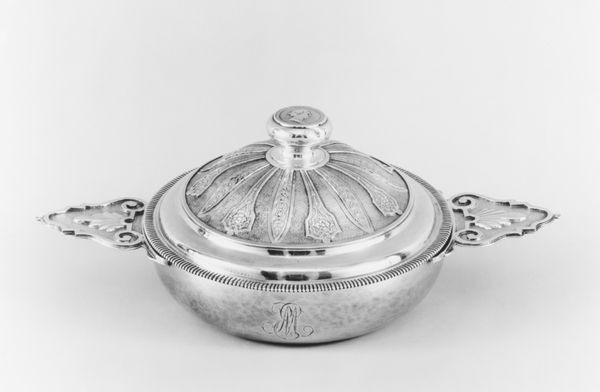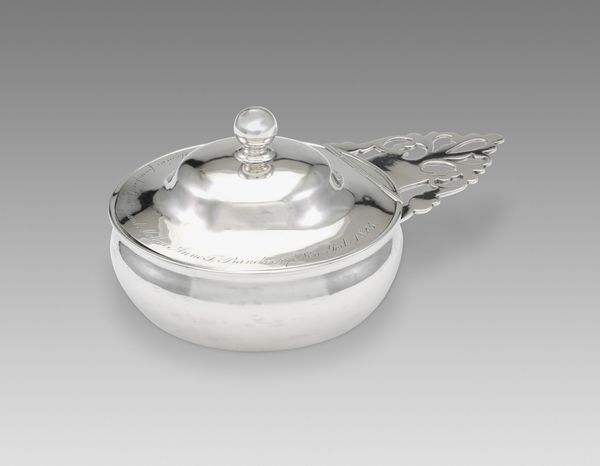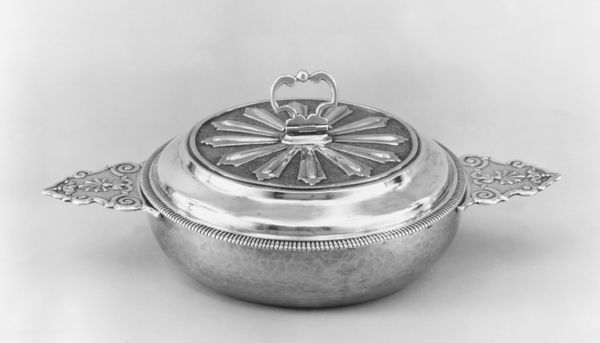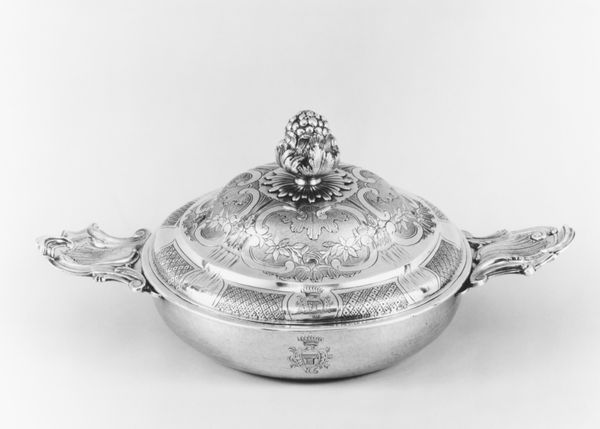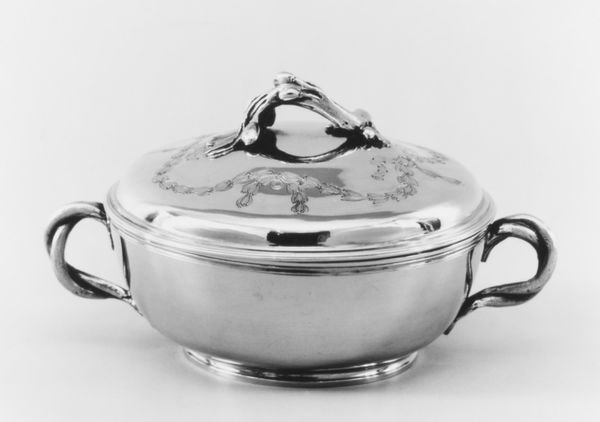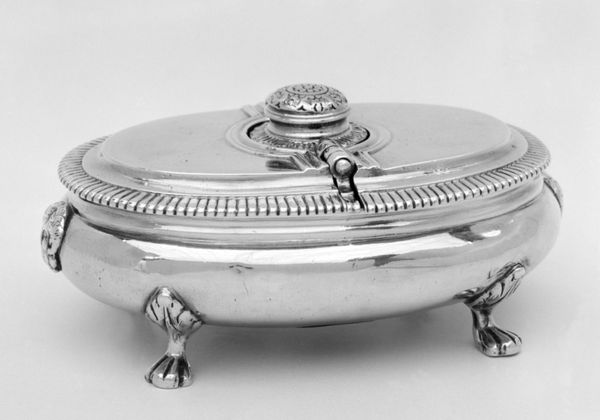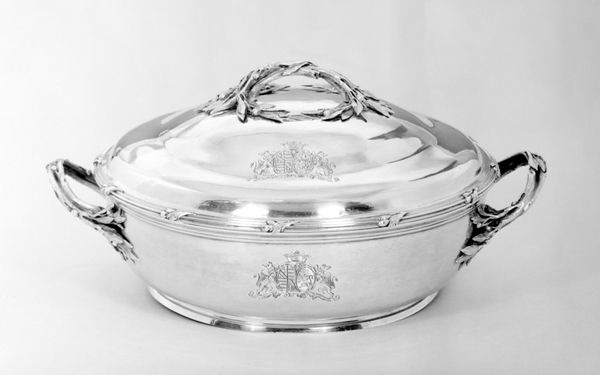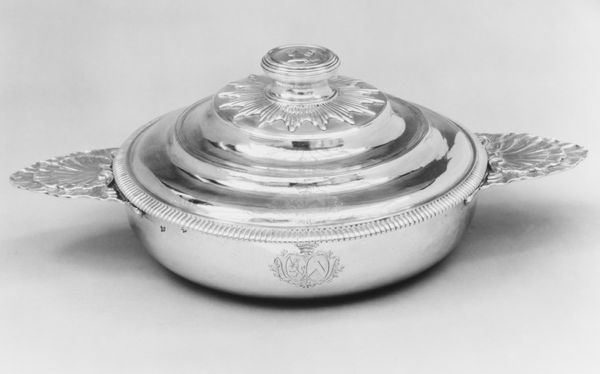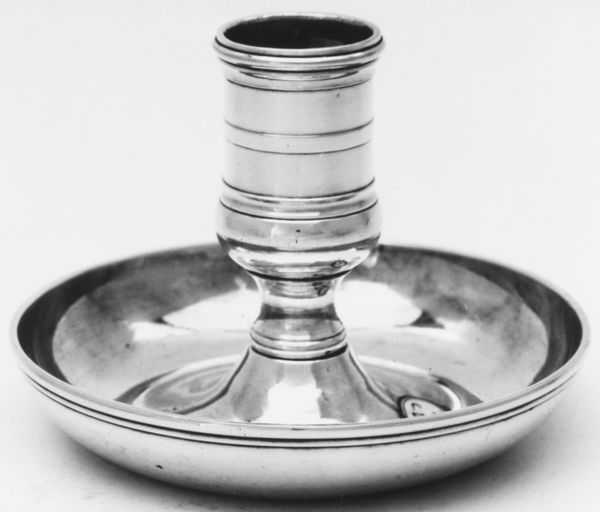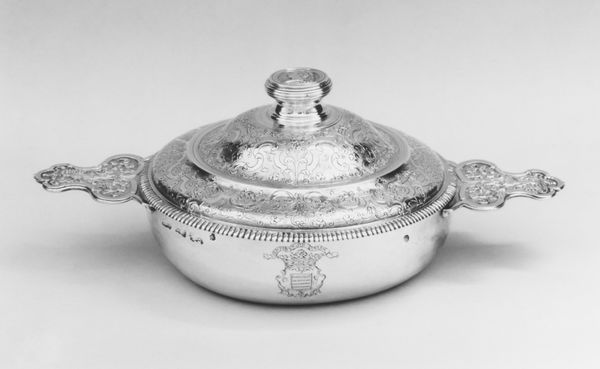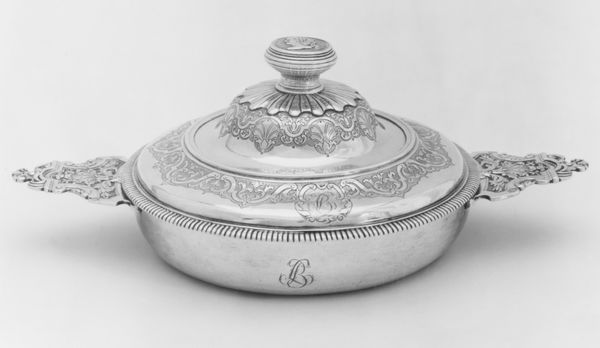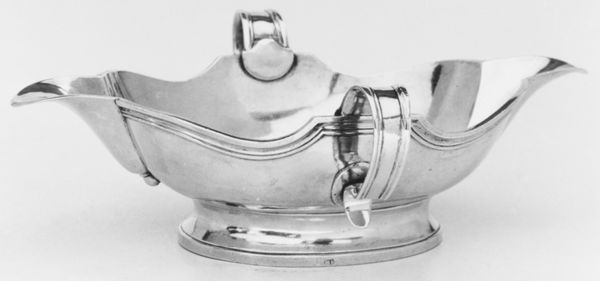
silver, sculpture
#
silver
#
baroque
#
sculpture
#
decorative-art
Dimensions: Overall: 4 1/4 × 7 1/8 × 11 5/8 in. (10.8 × 18.1 × 29.5 cm)
Copyright: Public Domain
Editor: This is the "Broth Bowl with Cover", or écuelle, made of silver by François-Isaac Balduc between 1730 and 1740. It lives at the Metropolitan Museum of Art. Something about its simplicity makes it feel… regal, almost untouched by human hands. How would you interpret this work? Curator: Untouched, eh? I see that and hear you! It’s an interesting reaction, given its purpose! Perhaps the reflective nature of the silver creates that sense? Silverware like this – think of the glint, the echoes in a grand dining hall - were about far more than simple sustenance. How might this object function as a signifier of wealth, status, and taste in the Baroque era? Think Versailles, think courtly ritual. Editor: I hadn't really thought of that. So, beyond holding broth, it's communicating a message about power? Is the material—the silver—also sending that message? Curator: Exactly! Silver, highly polished, brilliantly reflecting light… it’s all about visual impact. The Baroque was a theatrical age. Every object, every gesture, performed a role. Consider the shape: the curves, the handles… what do those details whisper to you? Editor: They make me think of… extravagance! I’m also now realizing that this isn’t just functional. It's an artistic expression, in a way I didn't fully grasp at first. Curator: Precisely! It’s blurring the lines between function and art. What did this conversation stir for you? Editor: That the most everyday objects are able to reflect the historical and cultural background of its creation, if we look close enough! What a way to approach art and life itself!
Comments
No comments
Be the first to comment and join the conversation on the ultimate creative platform.
